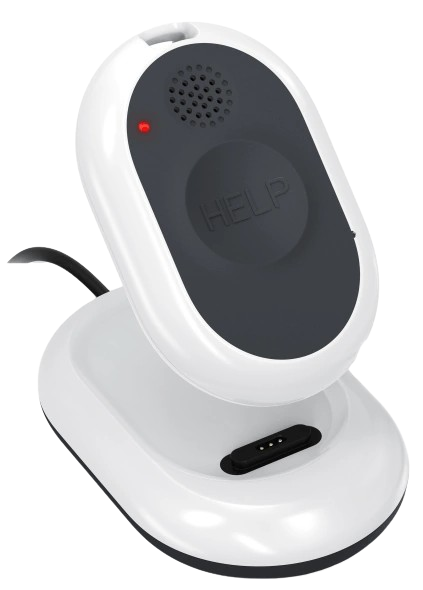Canada is split into federal, and provincial / territorial jurisdictions when it comes to laws and policies, though when it comes to employment policies for lone workers most provinces, such as Manitoba adhere to Canada’s federal Occupational Health and Safety Code.
The province of Manitoba also has its own best practices and recommendations when it comes to work as or employing lone workers. This page will help summarize some of these recommendations for employers in Manitoba who may employ lone workers in their businesses.
On This Page
Our Guide To Lone Worker Safety Policy And Legislation In Manitoba
Employment as a lone worker comes with inherent risks in Manitoba, and as such it is important to be informed of risk management for lone workers to protect both the employees and the businesses of employers in Manitoba.
On this page we will provide reference to how a lone worker is defined in Manitoba, and the best practices and policies to know as an employer in Manitoba.
How Manitoba Defines A Lone Worker
Manitoba defines lone workers by 2 specific criteria:
- The employee is alone at the workplace, at any time.
- The employee is not directly supervised by the employer or another supervisor designated by the employer, at any time.
If both of these criteria are true, the employee can be considered a lone worker (or “working in isolation”) in Manitoba.
Employing A Lone Worker In Manitoba
If you have determined that your employees are defined as lone workers by the criteria mentioned above, the next step is to implement proper workplace practices to ensure their safety, and the integrity of your business.
To do so, it is important to implement risk identification and safe work procedures to assess those risks. Consider if your workplace contains any of the following:
- Toxic gases, liquids, or solids
- High pressure or high voltage electrical systems
- Heavy machinery and equipment
- Flammable liquids such as oils
If your workspace involves anything from above, it can be considered a hazardous risk environment and safe work procedures need to be put into place to ensure the safety of your employees. Ensure your employers and supervisors are properly trained on these safety procedures.
Learn How You Can Protect Your Employees With Loneworker.com

With Loneworker.com you can be equipped with the knowledge and the means to protect your employees and protect your business. Contact us today to learn more about how Loneworker.com can protect you and your employees.
How The Safe Lone Worker App Can Protect Manitoba Lone Workers And Employers
An important part of keeping your lone workers safe is providing quick and easy communication and monitoring in the event of an emergency.
With the Safe Lone Worker App, you can easily monitor your employees' while they are carrying out their responsibilities, even if they are travelling alone. The app works in tandem with a man down alert button that can be pressed in the event of an emergency. If the button is pushed, the lone worker will be immediately put into contact with a monitoring center that can send help immediately and contact the employer.
Manitoba Lone Worker Policies
The content below has been included as a direct reference for lone worker policies as provided by Manitoba. This content has been included to serve as more detailed information and an easy reference point. This information is provided for your convenience, but should not be taken as legal advice. We encourage you to conduct your own research into the laws and regulations of your jurisdiction before making any decisions.
Introduction
This Code of Practice provides practical guidance on the requirements of Manitoba Regulation 217/2006 Part 9 -- Workers Working Alone or in Isolation -- adopted under The Workplace Safety and Health Act. This code does not replace either the regulation or The Act.
When an employee may be required to work alone or in isolation, there is a need to:
- Spot the hazard: Identify tasks where workers may have to perform work while working alone or in isolation.
- Assess the risk: Train workers in identifying and assessing hazards to which there may be personal exposure.
- Find a safer way: Implement measures to reduce, control, or eliminate hazards and try using alternative means of performing the work.
Employees can safely work alone or in isolation if they make proper hazard/risk assessments and implement safe work practices and procedures.
This code will:
1. assist in the recognition of working alone or in isolation situations
2. assist in the development of safe work procedures for performing such tasks
3. supplement an employer’s regular training program for workers required to work alone or in isolation
4. assist members of workplace safety and health committees in identifying and making recommendations for hazard evaluation and control
General Information
This Code of Practice does not cover all circumstances under which a worker may be required to work alone or in isolation. It does not specify monitoring methods required for specific situations.
Employers must ensure they have considered and addressed the hazards and risks in jobs where workers work alone or in isolation, and that appropriate safe work procedures have been developed and implemented.
The key concepts contained in the regulation for workers working alone or in isolation are:
- The necessity of assessing all jobs requiring employees to work alone or in isolation to determine the risks and reduce the probability of an incident
- The requirement to develop and implement safe work procedures to eliminate or reduce the identified risks to those workers. This includes training workers and providing help if there is an injury or other incident
The Workplace Safety And Health Act
Selected extracts from The Workplace Safety and Health Act, on duties of employers, supervisors and employees in the workplace follow.
Employers’ Duties
General duties
4(1)Every employer shall in accordance with this Act:
- (a) ensure, so far as is reasonably practicable, the safety, health and welfare at work of all workers; and
(b) comply with this Act and regulations.
Further duties of employers
4(2) Without limiting the generality of an employer's duty under subsection (1), every employer shall:
- (a) provide and maintain a workplace, necessary equipment, systems and tools that are safe and without risks to health, so far as is reasonably practicable;
- (b) provide to all his workers such information, instruction, training, supervision and facilities to ensure, so far as is reasonably practicable, the safety, health and welfare at work of all his workers;
- (c) ensure that all his workers, and particularly his supervisors, foremen, chargehands or similar persons, are acquainted with any safety or health hazards which may be encountered by the workers in the course of their service, and that workers are familiar with the use of all devices or equipment provided for their protection;
- (d) conduct his undertaking in such a way as to ensure, so far as is reasonably practicable, that persons who are not in his service are not exposed to risks to their safety or health arising out of, or in connection with activities in his workplace;
- (e) consult and co-operate with the workplace safety and health committee where such a committee exists, regarding the duties and matters with which that committee is charged under this Act;
- (f) consult and co-operate with the worker safety and health representative where such a representative has been designated, regarding the duties and matters with which that representative is charged under this Act;
- (g) co-operate with any other person exercising a duty imposed by this Act, or the regulations.
- (h) ensure that all of the employer's workers are supervised by a person who
- (i) is competent because of knowledge, training or experience to ensure that work is performed in a safe manner, and
- (ii) is familiar with this Act and the regulations that apply to the work performed at the workplace, and
- (i) if the employer’s workers are working on a construction project that has a prime contractor, advise the prime contractor of the name of the supervisor of the employer's workers on the project.
Employer as supervisor
4(3) For the purposes of clause (2)(h), an employer may supervise his or her workers if he or she satisfies the criteria set out in that clause.
Employer's responsibilities for training
4(4) Without limiting the generality of clause (2)(b), every employer shall provide information, instruction and training to a worker to ensure, so far as is reasonably practicable, the safety, and health of the worker, before the worker:
- (a) begins performing a work activity at a workplace;
- (b) performs a different work activity than the worker was originally trained to perform; or
- (c) is moved to another area of the workplace or a different workplace that has different facilities, procedures or hazards.
Performing work activity during training
4(5) Notwithstanding subsection (4), a worker may perform a work activity while being trained if the worker is under the direction of a supervisor or another person who is fully trained and has sufficient experience in performing that work activity to ensure that the safety or health of the worker and any other person is not at risk
Wages and benefits during training
4(6) A worker is entitled to the same wages and benefits for any time spent in training that he or she would be entitled to had the worker been performing his or her regular work duties during that time.
Duties of supervisors
4.1 Every supervisor shall
- (a) so far as is reasonably practicable:
- (i) take all precautions necessary to protect the safety and health of a worker under his or her supervision
- (ii) ensure that a worker under his or her supervision works in the manner and in accordance with the procedures and measures required by this Act and the regulations
- (iii) ensure that a worker under his or her supervision uses all devices and wears all clothing and personal protective equipment designated or provided by the employer or required to be used or worn by this Act or the regulations
- (b) advise a worker under his or her supervision of all known or reasonably foreseeable risks to safety and health in the area where the worker is involved in work
- (c) co-operate with any other person exercising a duty imposed by this Act or the regulations
- (d) comply with this Act and the regulations
General duties of workers
5 Every worker while at work shall, in accordance with the objects and purposes of this Act,l
- (a) take reasonable care to protect his safety and health and the safety and health of other persons who may be affected by his acts or omissions at work
- (b) at all times, when the nature of his work requires, use all devices and wear all articles of clothing and personal protective equipment designated and provided for his protection by his employer, or required to be used and worn by him by the regulations
- (c) consult and co-operate with the workplace safety and health committee, where such a committee exists, regarding the duties and matters with which that committee is charged under this Act
- (d) consult and co-operate with the worker safety and health representative, where such a representative has been designated, regarding the duties and matters with which that representative is charged under this Act
- (e) comply with this Act and the regulations
- (f) co-operate with any other person exercising a duty imposed by this Act or the regulations
The entire Act and relevant parts of the regulation should be studied in detail in order to gain working knowledge of their requirements.
Definations
Working alone means the performance of any work function by a worker who:
- (a) is the only worker for that employer at that workplace at any time
- (b) is not directly supervised by the employer, or another person designated as a supervisor by the employer, at any time
"Working in isolation" means working in circumstances where assistance is not readily available in the event of injury, ill health or emergency.
The definition of working alone indicates that the regulation will apply to virtually all workers who are performing a job function when they are not in the presence of their employer, another person in a supervisory capacity (designated by the same employer), or another worker directly associated with the same employer, at the particular workplace location and during the same time period the working alone job function is being performed.
The definition of working in isolation refers to those persons whose work sometimes or regularly requires them to be at a worksite that is remote from other workers, depending on the physical set up of the facility in question, and in circumstances where assistance is not readily available in the event of injury, ill health or emergency
Many workers may fall into either category. However, in the case of working alone, they may be in contact with workers associated with a different employer or the general public. Such contact does not rule out the concept that the worker is working alone, and therefore this situation will require the same particular attention as outlined in the Regulation.
Manitoba Regulation (M.R.) 217/2006 Part 9
Working Alone Or In Isolation
Application
9.1 This part applies to every workplace where employees work alone or in isolation.
Risk identification
9.2(1) When a worker works alone or in isolation, an employer must identify the risks arising from the conditions and circumstances of the worker's work in consultation with:
- (a) the committee at the workplace;
- (b) the representative at the workplace
- (c) when there is no committee or representative, the workers at the workplace.
9.2(2)An employer must, so far as is reasonably practicable, take steps to eliminate or reduce the identified risks to workers working alone or working in isolation.
Safe work procedures
9.3(2) Safe work procedures must include:
- (a) the establishment of an effective communication system that consists of:
- (i) radio communication
- (ii) telephone or cellular phone communication
- (iii) any other means that provides effective communication given the risks involved
- (b) any of the following:
- (i) a system of regular contact by the employer with the worker working alone or in isolation
- (ii) limitations on or prohibitions of specified activities
- (iii) the establishment of training requirements
- (c) where applicable, the provision of emergency supplies for use in travelling or working under conditions of extreme cold or other inclement weather conditions.
9.3(3) An employer must post a copy of the safe work procedures in a conspicuous place at the workplace.
9.3(4) An employer must review and revise the procedures not less than every three years or sooner if circumstances at a workplace change in a way that poses a risk to the safety or health of a worker working alone or in isolation.
Personal first aid kit for worker working alone
Part 5.13 of M.R. 217/2006 statesthat an employer must ensure a personal first aid kit, that meets the requirements of Schedule B of this part, is provided to a worker who works alone and who does not have ready access to a first aid kit required to be provided under subsection 5.12(1).
Risk Identification
As previously mentioned, subsection 4 (2), clause (b) of The Workplace Safety and Health Act states that every employer shall "provide to all his workers such information, instruction, training, supervision and facilities to ensure, so far as is reasonably practicable, the safety, health and welfare at work of all his workers."
When workers are involved in working alone or in isolation situations, special consideration should be given to the fact that the worker may not be able to secure assistance, in the event of an incident, as readily as when working with a group of co-workers.
Within the context of ‘reasonably practicable’, both employers and workers have responsibilities and duties to undertake any job function in the safest manner, taking all reasonable care in each circumstance in order to minimize the possibility of an incident
Risk identification is normally referred to as a Job Hazard Analysis (JHA) or Job Safety Analysis (JSA). Resource Material regarding job hazard analysis as developed by the Canadian Centre for Occupational Safety and Health (CCOHS) is appended.
When assessing the conditions or circumstances under which the worker is required to work alone or in isolation, particular job functions will have inherent hazards associated with them that may be deemed as high risk, low risk or combinations of both. The degree of risk involved will not eliminate the requirement for developing safe work procedures to minimize these risks.
Examples of work functions that present high risk hazards may include:
- Entering any confined space
- Working with:
- high energy materials (radioactive, high temperature)
- toxic gases, liquids, or solids
- cryogenic (low temperature) materials/processes
- high pressure systems (high voltage electrical systems)
- logging industries
- moving equipment or machinery
- Working in:
- extreme weather conditions
- laboratory functions
- Handling or transferring flammable liquids such as in oil and gas industries
- Industries where the job functions may not be hazardous but the work environment may attract criminal victimization (Eg: where cash or goods are handled as in retail stores, taxis, gas stations, etc.)
Examples of work functions that present low risk may include:
- Maintenance (other than on active processing equipment)
- Security personnel (except in hazardous locations)
- Janitorial or custodial (except in hazardous locations)
- Truck drivers or business people in transit
- Office work
Safe Work Procedures
The circumstances or conditions under which employees are required to work alone or in isolation must be assessed. Control methods / safe work procedures must be developed (in writing) and implemented to minimize the identified risks.
For the purpose of this regulation, the consultation process, with the safety and health committee or representative, is integral to the development and implementation of safe work procedures and training for employees…
The Workplace Safety and Health Act requires workplaces in the province of Manitoba to establish workplace safety and health committees where there are 20 or more employees. Workplaces with 10-19 employees must have a worker safety and health representative. For further information, refer to The Act, Manitoba Regulation 217/2006 Part 3, and the Workplace Safety and Health Division’s Guideline for Safety and Health Committees.
Under The Workplace Safety and Health Act, employers must consult and co-operate with the workplace safety and health committee or the worker safety and health representative. In workplaces where a committee or representative is not required (less than 10 employees), the Act requires employers to consult with workers at the workplace.
Written, safe-work procedures must include an effective communication system and a way for employees working alone or in isolation to get help if there’s an injury or other misfortune.
The following suggestions may be incorporated as part of the safe work procedures. Depending on the situation, the examples could represent control methods to minimize risks, ways to get help in an emergency or a combination of both.
Second Person or Buddy System
Using a buddy system may be part of a safe work procedure. Employees who are required to enter a confined space where the risk assessment has identified the space to be (or may become) hazardous must have a standby person (buddy) present at the entrance at all times while the employee is in the space. (Please see the Workplace Safety and Health Division’s Code of Practice for Confined Space Entry Work for detailed information on the requirements for confined space entry work.)
In all buddy system situations, consideration must be given to the buddy's qualifications. The buddy must be knowledgeable about the activities of the employee he/she is observing, be properly equipped with emergency equipment, and be capable of putting preplanned rescue or emergency operations into effect.
With the buddy system, a second person's presence is required at all times. However, where the probability of serious consequence is high, the two employees must not be exposed to the hazard at the same time. The second person should be within sight, but safely removed from the immediate area.
The buddy system may not be practical in some situations. The consultation must address all factors to decide the best approach in developing safe work procedures
Personal Check by Another Person
In many instances, checking the worker's well-being can be done through periodic visits at regular intervals by an individual, such as the employer, another employee or someone designated by the employer.
The length of time between checks will depend on the identified risks of the job function.
As indicated with the buddy system, the person designated to check the employee working alone must be knowledgeable about that employee’s activities and must be capable of putting preplanned emergency operations into effect. Contact with the general public (Ex: passers by) is not considered an adequate control method. However depending on the activity, this control method may become part of a safe work procedure for working in isolation.
Periodic Telephone Contact
Use of the telephone for communication at regular intervals may be adequate in low risk situations. Telephone numbers for routine calling and emergency situations must be posted prominently.
An example could include a night security person’s function at a location which has been determined to have low risk. Security personnel could call in to their dispatch offices at regular intervals, (Ex: every hour before starting their rounds). The intervals between these contacts would have to be determined by the estimated hazards at the workplace. Regulating phone calls to specific times during that work activity may reduce the number of false alarms.
Protection of employees who do routine jobs will change when that job is performed in non-routine conditions. This includes such things as the absence of other employees in the workplace or when the job is performed outside of normal working hours for that employee. Even for low hazard activities, such as office work, the employee should be instructed in safe work procedures for working alone.
Constant or Intermittent Mechanical or Electrical Surveillance
Mechanical or electrical surveillance equipment may be used in a working alone or in solation situation. The security systems in use at the workplace may be modified to monitor a particular employee who is working alone or in isolation as well as the status of the workplace itself.
Many workplaces use personal pagers, two-way radios, emergency sounding devices, visual monitoring systems and similar equipment. This equipment is used as part of everyday operations. Many workplaces use wireless or hard-wired systems as well.
The most important point to consider is the suitability of safety measures and systems to workers’ needs. For example, if an employee is deaf, visible alarms should be provided in the workplace.
References
Manitoba Labour and Immigration Workplace Safety and Health. Code of Practice for Workers Working Alone or in Isolation. Nov. 2006.
Government of Canada, Canadian Centre for Occupational Health and Safety. Working Alone - General. 10 May 2024.
Loneworker.com is an aggregate resource and is not directly affiliated with government policies, legislation, or guidelines. Our site is intended to gather and display information for your use, but you are encouraged to conduct your own research.
Manitoba Lone Worker Resources

Safe Work Manitoba
Within Winnipeg
- 204-957-7233
Outside of Winnipeg
- 1-855-957-7233

Lone Worker And Employment Facts In Manitoba
729,100 People Are Employed In Manitoba.
The largest industries in Manitoba are Manufacturing and Health Care / Social Assistance.
Affordable Monitoring For Lone Workers In Manitoba

-
 Monitoring Your Employees' Safety
Monitoring Your Employees' Safety
-
 GPS Tracking And Monitoring
GPS Tracking And Monitoring
-
 Man Down Panic Alerts
Man Down Panic Alerts
-
 24/7 Protection Anywhere
24/7 Protection Anywhere
Lone Worker Legislation
Lone Worker Safety Policies And Legislation By Province
-
 Alberta Provincial Safety Policies And Legislation
Alberta Provincial Safety Policies And Legislation
-
 British Columbia Provincial Safety Policies And Legislation
British Columbia Provincial Safety Policies And Legislation
-
 Manitoba Provincial Safety Policies And Legislation
Manitoba Provincial Safety Policies And Legislation
-
 New Brunswick Provincial Safety Policies And Legislation
New Brunswick Provincial Safety Policies And Legislation
-
 Newfoundland and Labrador Provincial Safety Policies And Legislation
Newfoundland and Labrador Provincial Safety Policies And Legislation
-
 Nova Scotia Provincial Safety Policies And Legislation
Nova Scotia Provincial Safety Policies And Legislation
-
 Ontario Provincial Safety Policies And Legislation
Ontario Provincial Safety Policies And Legislation
-
 Prince Edward Island Provincial Safety Policies And Legislation
Prince Edward Island Provincial Safety Policies And Legislation
-
 Quebec Provincial Safety Policies And Legislation
Quebec Provincial Safety Policies And Legislation
-
 Saskatchewan Provincial Safety Policies And Legislation
Saskatchewan Provincial Safety Policies And Legislation
-
 Northwest Territories Provincial Safety Policies And Legislation
Northwest Territories Provincial Safety Policies And Legislation
-
 Nunavut Provincial Safety Policies And Legislation
Nunavut Provincial Safety Policies And Legislation
-
 Yukon Provincial Safety Policies And Legislation
Yukon Provincial Safety Policies And Legislation







